What Lies Beneath: Who And What You Might Meet If You Use Your Overspec’d Dive Watch In Its Natural Habitat
And remember, handsome is as handsome does.
The question of depth ratings and exactly what they mean has preoccupied watch enthusiasts for many years, although in the last five or so it’s become increasingly clear that in general, watches can be used for the environment for which they were designed – with a few caveats.
Water Resistant Watches Vs. Diver’s Watches
The biggest is that depth rating claims are actually subject to two different standards. First of all there is the famous international standard for dive watches, ISO 6425, which is intended to regulate testing for watches that are designed and sold for use in recreational and sometimes, professional SCUBA diving. Such watches must have a depth rating of at least 100 meters (not a typo, by the way; most recreational dives take place at a maximum depth of 40 meters and often, much shallower) a one way timing bezel, with at least a lume pip, and there are requirements for visibility, as well as resistance to shock and to magnetism. If the watch is one intended for saturation diving, there are additional requirements as well, including an overpressure function test during which the interior of the watch is brought to the expected maximum internal pressure when operating at max pressure in a diver’s habitat.
Second, there is the more general water resistance rating, which is ISO 2281. This standard is meant to cover testing and construction procedures for non-dive watches, which can have widely varying depth ratings, and which are not expected to be regularly and consistently immersed. Here, the standard is less rigorous and a number of the tests essential for certification for a diver’s watch are omitted, including testing for corrosion; there are also no requirements for shock resistance or resistance to magnetism.
The biggest single difference between the two standards, however, is testing. If a line of watches are sold as dive watches, each watch has to be individually tested – that means that your specific 100 meter diver’s watch has actually been through the battery of tests specified by ISO 6425. Water resistant watches, however, are not individually tested, but sample tested. Given the consistency of modern manufacturing, a sample test of a watch to, say 30 meters offers a reasonable assurance that if a sample watch measures up under pressure, yours will too, but it is undoubtedly more reassuring to know that your personal watch has passed the tests of a third-party standard. It is rather like knowing a family where one member is renowned for their intelligence – it tends to run in families and maybe the sibs and parents are smarties too … but maybe not.
The difference between the two may be part of the reason that manufacturer’s recommendations can sometimes seem contradictory – there is probably a tendency to offer conservative guidelines since having different ones for dive vs. non-dive watches in the catalog might be confusing to consumers. This also gives lovers of dive watches as daily drivers something of an argument for not being divers themselves, but having a dive watch – well, it is not so much that you expect to dive to six thousand meters, but rather that the standard offers a much better guarantee that the rating means what it says.
All this of course is background data to the larger point, which is that as depth ratings go up, you rapidly get into situations where if you are at the rated depth, you probably have bigger problems than your watch stopping. To illustrate, let us take an imaginary journey from the sun-drenched surface waters of the ocean, to the deepest abyss. There, no sunlight ever penetrates, and yet … there is life.
1 to 200 Meters: The Epipelagic, Or Sunlit Zone
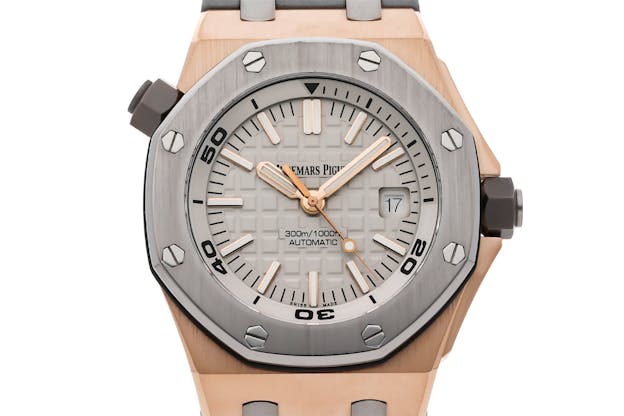
What to wear: Well, you’re spoiled for choice. At these depths you don’t have too much to worry about when it comes to water pressure, although depending on whether or not you actually dive, you might want an ISO-compliant diver’s watch just to be on the safe side. At this depth, or lack thereof, there are countless possibilities, from the most utilitarian entry level Seiko and Citizen dive watches up to and including the Royal Oak Offshore Diver, and heck, if you’re feeling brave, you could even strap on a 30 meter water resistant minute repeater (Moser makes one) and give the fishies a little tune.
Who you’ll meet: This handsome chap.
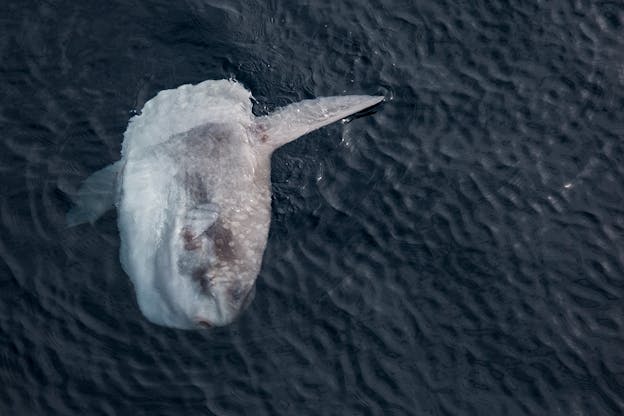
Meet the giant ocean sunfish, or mola – Mola mola, in fact. They like to spend their days basking at the surface, swimming slowly along at a very leisurely pace, stopping occasionally to eat a jellyfish or ten. (They will eat other things too, including any fish small enough, and unmotivated enough, to end up in the sunfish’s mouth). They are giants, just like it says on the tin, and can weigh a ton or more. Unfortunately this is also the depth at which you are apt to run into a great white shark, but the mola, at least where humans are concerned, is a dedicated pacifist (or at least profoundly uninterested).
200 to 1000 meters: The Mesopelagic, Or Twilight Zone
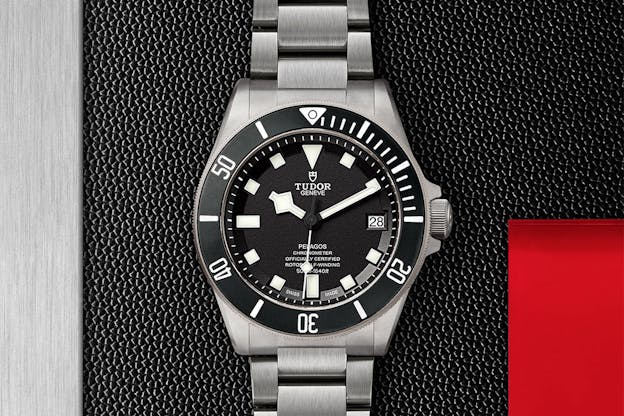
What to wear: Ah, the twilight zone, where available sunlight gets very faint indeed. At these depths your options in terms of watches start to drop off significantly. Dive watches made for the general consumer market typically level off (hahaha) at around 300 meters but nonetheless, there are dive watches which can definitely handle the environment and then some. Pressure is now starting to become a major issue; as you get deeper the water pressure goes up about one atmosphere (which is 14 PSI and change) for every meter you go deeper and you’re getting into the realm of watches made for mixed gas and saturation diving. Breitling and Bremont are a couple of makers who add an extra 100 meters onto the habitual 200, and bless them for that – and then, if you want something with a little extra margin, there is of course always Omega, which makes a number of Seamaster watches that can hit 600 meters. And let’s not forget the Tudor Pelagos – the standard Pelagos is rated to 500 meters and is not only a technically advanced high spec dive watch, but also a tough and handsome daily driver as well.
Who you’ll meet: The ballishtick misshile shubmarine Red October, commanded by Captain First Rank Marko Ramius, the Vilnius Schoolmaster, who has taken out every lead boat of its class in the Red Banner Northern Fleet, and who for some reason has a Scottish accent thicker than haggis. You’ll hear his weirdly non-Russian accent radiating, at depth, from one of these monsters, if your passive sonar is good enough. The fictional sub is a version of the real life Soviet Typhoon class SSBNs, or ballistic missile submarines – the biggest subs of any kind ever built.
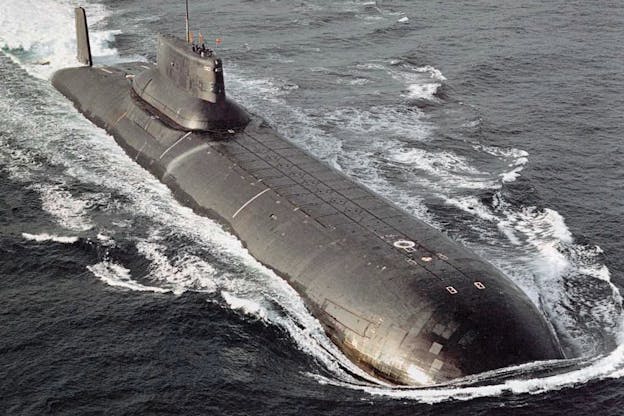
I know, it’s surprising that one of these beasts, the Soviet Typhoon class SSBN, cannot actually dive all that deep (if you watched The Hunt For Red October, you could be forgiven for thinking that the Typhoons could go deep enough to pull the tail of a sperm whale, but nope). The test depth for the Typhoons, which are by a healthy margin the biggest submarines ever made, is a surprisingly paltry 400 meters and the length of the boat is 175 so basically, they could only go as deep as about two and a half times their length. If you are used to being wowed by overspec’d depth ratings you might be disappointed, just slightly, in submarines – the latest US attack sub, the Virginia class, has a classified … well, everything, but open source intel says test depth is around 240 meters.
1000 to 4000 meters: The Bathypelagic, Or Midnight Zone
What To Wear: Here things start to get really weird. At these depths you are well past the maximum limit for safe SCUBA or mixed gas diving.Very few human divers have gone anywhere near these depths – the record for an open water dive was an experimental dive conducted by COMEX (Compagnie Maritime d’Expertises) which is a French firm specializing in deep water diving and engineering solutions. In 1988, a team of COMEX divers performed a pipe line connection exercise at 534 meters, and in 1992, COMEX successfully simulated a dive to 701 meters in an onshore pressure habitat. The limiting factor seems to be something called high pressure neurological syndrome – breathing mixed gasses under very high pressure can cause symptoms ranging from tremors to confusion to nausea and more, none of which you want happening when you’re operating in an environment where the slightest goof means instant death.
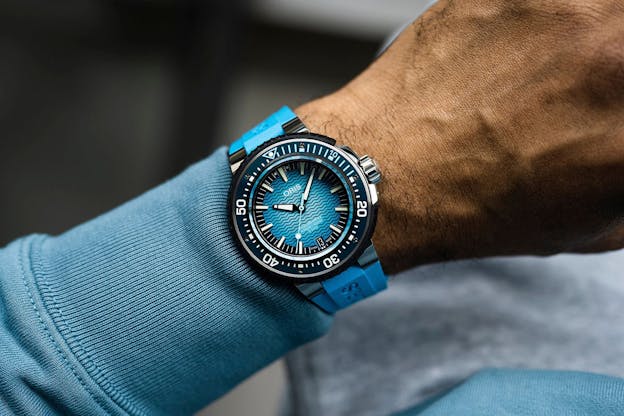
Surprisingly enough, you still have some options here, although far fewer than for shallower depth ratings (for obvious reasons). Seiko, Mühle Glashütte, and Citizen all produce diver’s watches rated to 1000 meters, as does Oris – these are not watches that tend to spend a lot of time at the top of your watch news feed as often, they’re not the latest new models, and developing them (I’d guess) represents high R&D and testing costs for a fairly small audience. An Oris Diver 65 or Omega Seamaster 300 is a solid daily driver; a Seiko Marinemaster is much more specific in its look, heft, and overall appeal.
Fair warning: while you still have a pretty fair range of choices in the 1000 meter range, your options start to thin fast as you go deeper, although even at 4000 meters you still have a small selection, including – yes, it’s Oris again, with the Aquis 4000 Meters, and German niche fan favorite UTS has a 4000 meter watch in its catalog as well. Watches in the one to four thousand meter category tend to be, all other things being equal, on the hefty side as beyond a certain point you just need to add more material in order to get better resistance to very high hydrostatic pressure – at 4000 meters, with a little rounding off, you’re looking at over 58,000 pounds per square inch (more than two tons). There are quite a few things that weigh in the vicinity of 50,000 pounds, including fully loaded firetrucks, but hey, let’s go with the world’s largest gluten free pizza.
Who you’ll meet: This poster child for thalassophobia.
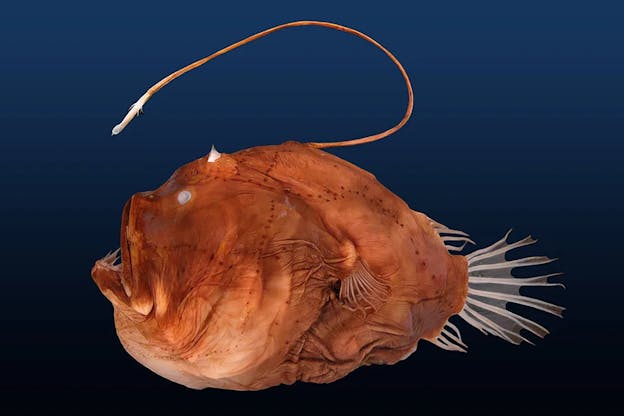
If you’ve seen one fish from the Midnight Zone, chances are it’s this charmer. Behold the deep sea anglerfish, which has become something of a meme (see, it can happen to anyone) thanks to its peculiar mating habits and, shall we say, challenging aesthetics. The lure over its mouth is bioluminescent, and draws prey into its gaping mouth – at these depths food is very scarce and the less energy you spend in pursuit, the better. The deep sea anglerfish male is tiny in comparison to the female and they mate when the male bites the female, and then is fused at the mouth to his mate, permanently. Very little hope for personal expression but you can’t beat it for job security.
The Abyssal Zone: 4000 to 6000 Meters
What To Wear: Well practically speaking you’d better be “wearing” a research submersible like the DSRV Alvin, one of the most famous of all research submersibles, because humans have never, and unless things change very much, will never, reach these depths in any kind of SCUBA gear. If you watched the James Cameron movie, The Abyss, you might remember them getting around this by using a liquid with oxygen dissolved in it as a breathing medium but in real life, such fluids are too much effort to breathe to be practical. However, watch enthusiasts love over-spec’d dive watches less for their day to day practicality, and more for the undeniable appeal that extreme engineering exerts. Here, Omega once again has you covered, as well they should given their decades-long involvement in making technical dive watches, with the Seamaster Planet Ocean 6000 Meters Ultra-Deep.
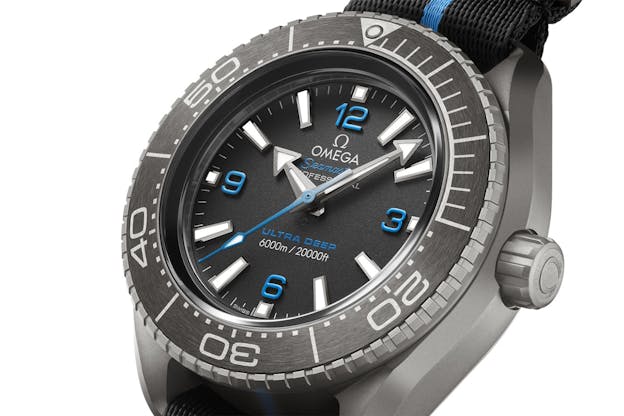
The PO 6000M is a Master Chronometer, which covers the antimagnetic requirement of the dive watch ISO and then some, and it’s also engineered with a very interesting pass-through lug system – they’ve been referred to as “Manta Ray” style lugs and there is a slight gap between the two halves of the lugs – I assume to allow the case to deform slightly if it needs to, under extreme pressure. At 6000 meters of course the pressure just keeps going up – to almost 88,000 psi, which works out to about 4.4 tons per square inch. There’s really no way to intuitively understand just how much pressure that really is; it’s not as if any of us will ever experience it – at least, not for very long.
Who You’ll Meet: Let us preface this by saying that the pickings at these depths are mighty thin. Without solar energy to power photosynthesis at the bottom of the food chain, available nutrients consist mostly of marine “snow” – falling organic detritus from shallower waters. The occasional fall of the corpse of a whale – a so-called whale fall – can provide an unexpected but, alas, temporary bonanza. However, some folks manage to eke out a living, including this sweet, sweet little fellow.

This is the dumbo octopus, so named for its fancied resemblance to the Disney elephant in the animated film of the same name. “Dumbo” is intended as an insult to a baby elephant in the film (and really, who’s callous enough to insult a baby elephant, for crying out loud?) but the dumbo octopus is smart enough to make a living where most other life wouldn’t last a minute. They seem to spend their time slowly crawling along the seafloor, eating mostly marine worms and arthropods, but they can move fast if they have to.
The Hadopelagic Zone: Deeper Than 6000 Meters
Deep ocean trenches are some of the most extreme environments on Earth – the deepest point of the Marianas Trench, the Challenger Deep, is 10,984 ± 25 meters down. Surprisingly enough there have been a small number of watches actually designed to function at these depths, including the almost forgotten (except among extreme dive watch enthusiasts) Bell & Ross Hydromax, which was a quartz watch with a case filled with mineral oil – a clever way to resist the extreme pressure at 11,000 meters, which was the rating of the watch.
The all time record for deep diving is held by Omega – the Planet Ocean Seamaster Ultra-Deep Professional, which was carried to a depth of 10,935 meters/ 35,876 on a manipulator arm which is part of the submersible, Limiting Factor, designed specifically for reaching the five deepest points in the oceans. Limiting Factor was designed by Triton Submersibles, and was commissioned by investor, explorer, and retired Naval Intelligence officer Victor Lance Vescovo, who has been to both the North and South Poles, the highest peak on each of the seven continents, participated in sub-orbital crewed spaceflight … you have to admire the hustle. Omega made three prototypes, and here’s one in situ, on the arm of Limiting Factor.

DSV (Deep Submergence Vehicle) Limiting Factor, is a very specific design intended to serve a very specific purpose. The spherical pressure hull is 90mm thick titanium and the watch was made from titanium used in the manufacturing process.
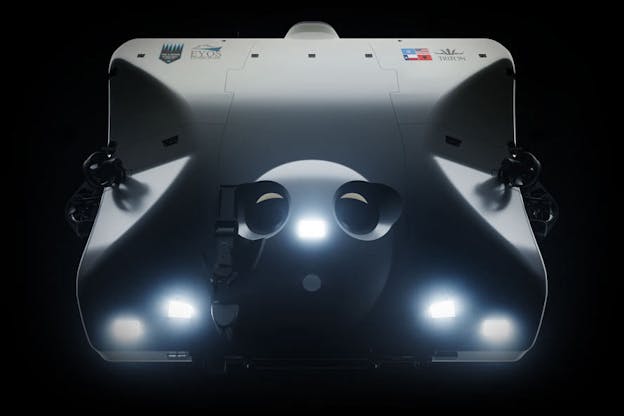
Who You’ll Meet: Well, this guy.

Victor Lance Vescovo, ladies and gents.
Somewhat less reassuringly, you may also meet this guy.

This is a deep sea amphipod, a marine crustacean which lives only in deep ocean trenches. I mean it’s not the most frightening thing you could see in the oceans but it is, full disclosure, a bit unsettlingly big, at up to 13 inches long. You wouldn’t want to walk into the kitchen at night for a glass of water, turn on the light, and find one in your sink, but at 10,000 + meters, running into one in real life is the least of your worries. I don’t know why this critter is any more upsetting than a jumbo shrimp, but it sort of is.
Well, that’s the ocean for you, and some watches to go along with you as you plumb the ocean’s depths. It is rather impressive that the watch industry has managed to design so many watches that fit so many genuinely extreme environments, but watchmaking, like life, finds a way.
Check out our collection of pre-owned, high water resistant watches, right here.


